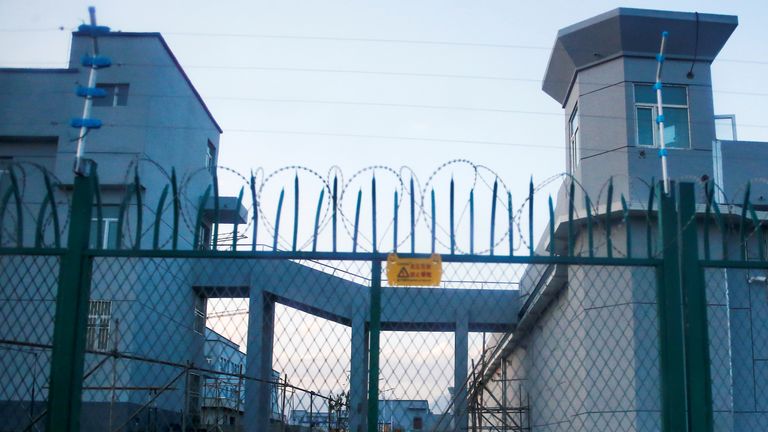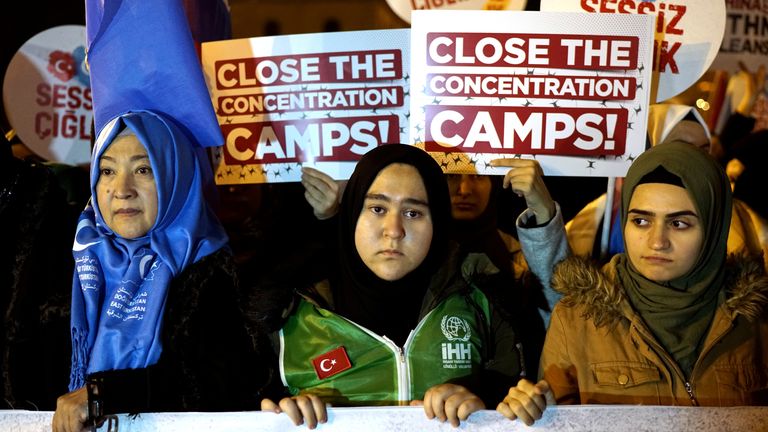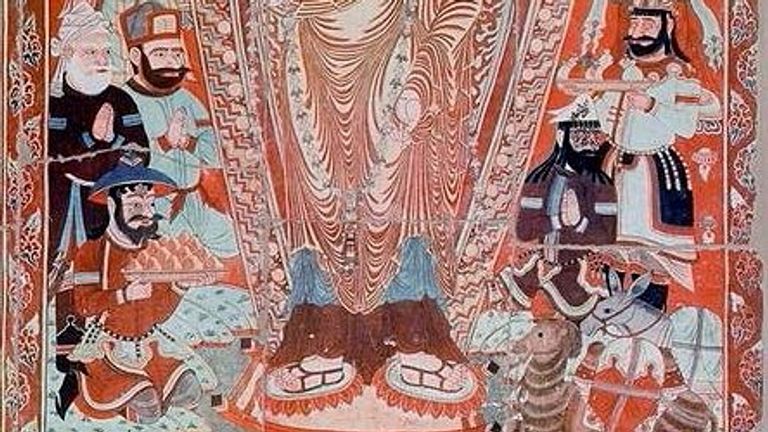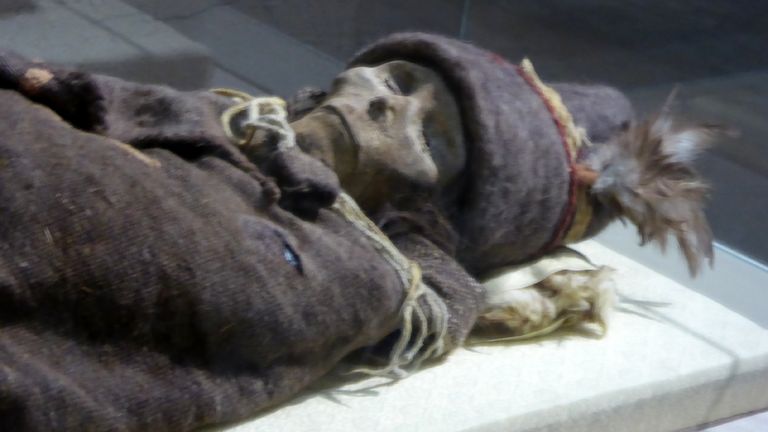China has been accused of oppressing and breaching the human rights of the Uighur people in its western Xinjiang province.
There have been widespread reports of Uighur people being held against their will in “re-education” centres, undergoing forced contraception and being subjected to a range of other restrictions.
China says the claims are “baseless” and have repeatedly denied any mistreatment of Uighurs, saying they live in “peace and harmony”.
But who are the Uighurs – pronounced “wee-gers” in English? And why might the Chinese state allegedly be targeting them?
Who are the Uighur people?
The Uighurs are a group of people who live mostly in the Xinjiang area of China.
They have been living there for at least several hundred years and there is good evidence that they may have lived there in some form for several thousand years.
They are generally regarded as a Turkic people, which means they speak a language related to Turkish and have ancestors who came from the traditional homeland of the Turks – north of central Asia.
But studies of their genetic make-up suggest that they also have ancestors who came from other parts of the world, with European DNA mixed with Chinese, south Asian, Siberian, and central Asian.
What have the Chinese been accused of?
China has been accused of interning one million Uighurs in “re-education” centres in Xinjiang.
Last November, leaked documents emerged that contradicted Chinese government claims that the detention camps were voluntary job training centres.
The classified papers appeared to confirm what former detainees had been saying, that the camps were centres for forced ideological and behavioural re-education, or brainwashing.
Last month, the Chinese government was accused of forcing Uighur women and member of other minorities to take part in birth control as part of a campaign to curb its Muslim population.
Last year, footage emerged purporting to show hundreds of blindfolded and shackled prisoners – who were thought to be from the Uighur population – being marched by guards in the Xinjiang city of Korla.
Sky News has also found evidence of children of exiled Uighurs going missing in Xinjiang.
Why might the Chinese oppress the Uighurs?
Xinjiang, where an estimated 80% of China’s Uighurs are said to live, is China’s most western province.
It is a politically sensitive region – surrounded by eight other countries.
As the home of a significant proportion of the Silk Road, it has long been used as a thoroughfare along which goods from China have travelled.
Some, possibly most, Uighurs do not accept that Xinjiang is part of China, citing the evidence that Uighur people lived in the area before Chinese Han and Tang dynasties set up protectorates.
Xinjiang, as it is now, came under Chinese Qing dynasty rule in the 18th century, but there have been many times in its history when it was not under Chinese control.
In modern times, China has been increasing the number of non-Uighurs in Xinjiang, so the proportion of Uighurs in the region is declining.
Some Uighurs resent that they are becoming, in their view, increasingly marginalised in the land where they have lived for centuries.
What unites the Uighur people?
The Uighurs are predominantly Muslim and have been for at least several hundred years.
But they have a rich and complex cultural history, stretching back millennia, with archaeological sites in Xinjiang showing that many in the past adhered to Buddhist beliefs, as well as those of other religions which now have relatively few followers.
Artworks discovered in caves in Xinjiang were made by Buddhist devotees who are believed to have been among some of the ancestors of modern Uighur people.
They show the diversity of the society at the time, with images dating from the fifth to 14th centuries of Indians, Persians, Chinese and even some resembling Europeans on the cave walls.
Uighurs are also united by a common language, which is related to Turkish, and by a shared culture of music, dance, food and other traditions.
How long have Uighurs been in Xinjiang?
The oldest known inhabitants of the Tarim basin, a part of Xinjiang, are the Tarim mummies.
The mummified remains have European features and it has been claimed that the people spoke a language related to European Celtic. They lived about 3,800 years ago.
But there have been many influxes of people since then.
One of the key factors that has influenced who lives in the area is the presence of the Silk Road – the main worldwide trade route from Roman to Medieval times – through Xinjiang along which travelled goods and people.
Some Chinese experts argue that Uighur people arrived in Xinjiang around the eighth and ninth centuries after the fall of a society further north called the Uighur Khaganate.
Other experts, however, say that those arrivals were just one of the many waves of immigration into the area, and the modern Uighur population reflects those past movements of people.
BY Philip Whiteside
Source: SKY News











